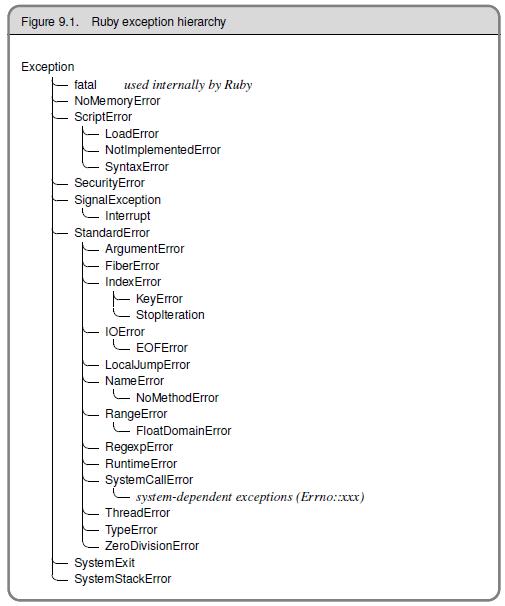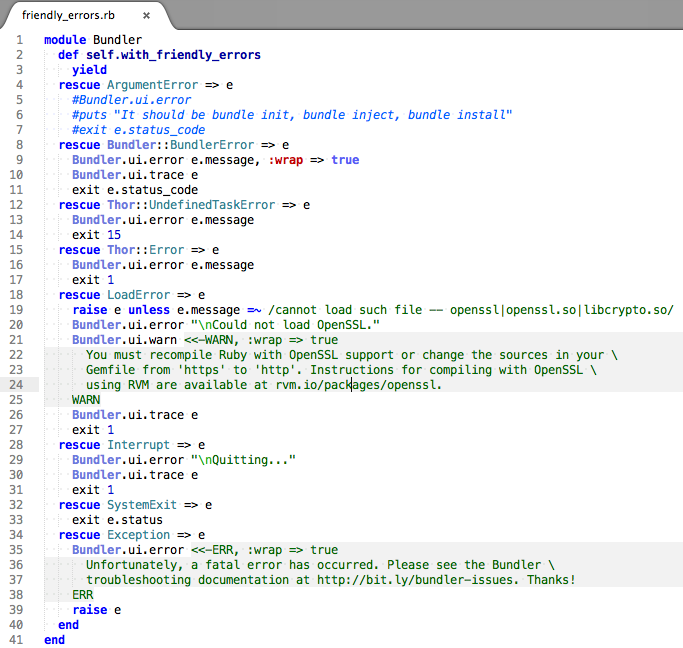Week 2 Day 9
Testing Testing 1, 2, 3
To easily make comments on our progress, we sent pull requests to our coach’s Bundler repo on Github containing our new code and test spec.
Pass The 1st Test
The goal was to get our first test to pass, which was to get an empty field when we run dbundle i rather than a stacktrace.
We read articles on Ruby Exceptions and The Perils of rescue Exception. We spent the day figuring out the importance of the Ruby exception hierarchy and that the order of the exception within the file also mattered.
The first step was to use the correct Exception class. Our stacktrace displayed the error as an ArgumentError, which is a descendent of Exception. We need to be more specific of what error we are capturing because if we use rescue Exception or rescue StandardError, it will potentially catch other errors.

If the rescue code gets added to the bottom of the file, the test will not pass. We have to add it above the other rescue's. The order/hierarchy matters.

To manually see that it works, we type in dbundle i in our rgsocbundler directory and wahlah. Nothing gets displayed. Before, when we ran dbundle i, we got a stacktrace.
Pass the Second Test
The next step, we created our second test to print out a message. When we type dbundle i, we want it to print out a message.
We used this file for reference on the variables used for the error and output and rspec syntax (the correct term is matcher).
More Learning
We just wrote some Integration Tests. Now we started reading what are Integration Tests and Unit Tests and what is the difference between the two of them?